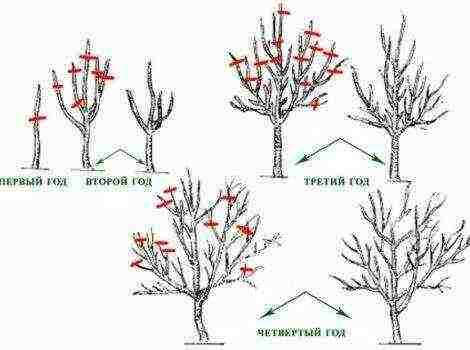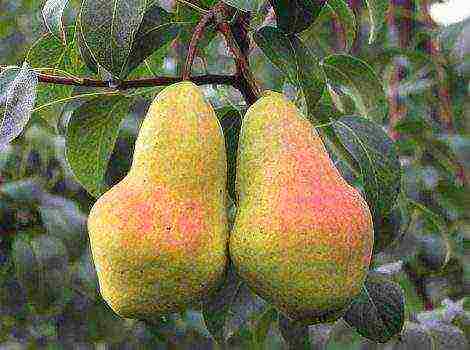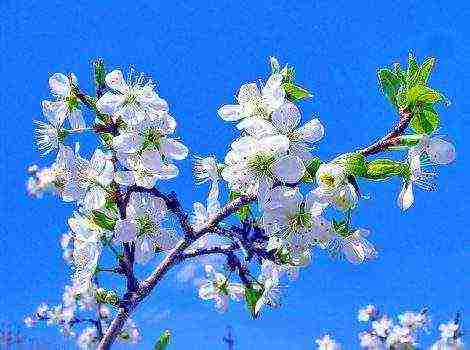Detailed description of the Manchu nut
The Manchurian walnut belongs to the walnut family and is considered the closest relative of the walnut. In addition to its attractive appearance, the culture has pronounced healing properties and is appreciated not only in various fields of medicine, but also in cosmetology and cooking.
In this article, we will talk about the description of the Manchurian nut, its medicinal benefits and harm to the body, and also learn how to take care of it in your summer cottage.
Characteristics and description of the Manchurian walnut
Manchurian walnut belongs to the genus walnut and is a shrub or deciduous tree. The culture is considered monoecious, in other words, male and female inflorescences grow on the same tree. The second name of the plant is Dumbey nut.
The homeland of culture is considered to be the northeast of China, or, more precisely, the area called Manchuria. It also grows in nature on the Korean Peninsula and the Far East, in particular, in the Amur Region, Primorye, and Sakhalin.
Outwardly, the Manchu nut is quite remarkable. The crown of the tree is spreading and somewhat resembles a ball. The color of the bark is closer to dark gray, but the shade of the shoots is more brown. Under natural conditions, the height of adult culture representatives can reach 30 m, and life expectancy is great - up to 200-250 years... At the same time, the active growth of the tree continues only up to 80-90 years, after which the process slows down.
The leaves of the Manchurian walnut are characterized by rather large sizes, in contrast to their closest relative, the walnut. Interestingly, one leaf consists of 8-20 oblong and smaller leaves with jagged edges. On average, the total length is about 50 cm, but there are specimens with sizes reaching 100 cm. In the summer, the foliage has a rich emerald color, but by autumn it acquires a golden hue.
At 10-12 years of age, the plant begins to bear fruit. At the same time, flowering occurs in April-May, but the harvest of fruits can be harvested only in late summer - early autumn. In terms of appearance, the nuts are oval in shape and are about 3-5 cm in diameter. They grow in clusters of 2-7 fruits per branch. It should be noted that the Manchurian walnut shell is durable, and its thickness reaches 5 mm.
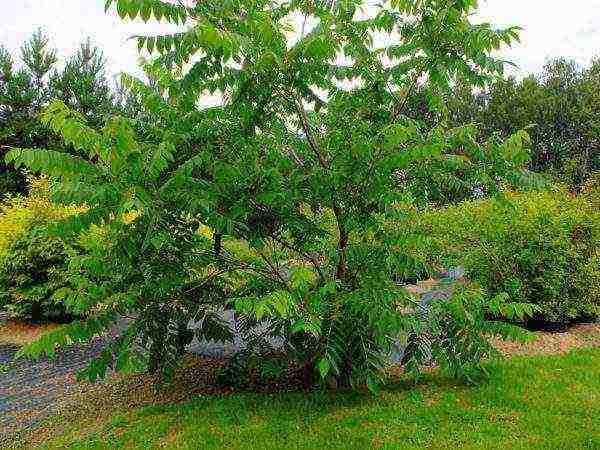
Benefits and harm to the body in Siberia
The Manchurian walnut can be called a somewhat unique culture. Leaves, bark, and, of course, the fruits of the plant have amazing healing properties. Naturally, such opportunities are determined by the richness of the chemical composition, the main components of which are:
- vitamins of groups A, C, B;
- tannins;
- potassium;
- magnesium;
- carotene;
- phytoncides;
- alkaloids.
In addition, the pericarp of the nut contains malic, gallic, citric acids, coumarins and vitamins of group P. And the oil obtained from Manchurian walnut combines linoleic, linolenic, oleic, palmitic and stearic acids in its composition.
As for the beneficial properties, the following plant capabilities are distinguished:
- antiseptic, wound healing properties;
- anti-inflammatory effect;
- analgesic effect;
- vasodilating effect;
- diuretic effect;
- an obstacle to the development of parasites in the body;
- air purification;
- antifungal properties;
- improving the functioning of the gastrointestinal tract;
- antispasmodic effect.
The healing effect of the Manchurian nut has long been known and proven - the tone of the body rises, the work of the digestive tract is optimized, and the appearance of the skin and hair improves. But there are also some contraindications to the use of funds based on it. First of all, it is worth highlighting pregnancy and lactation. It is also strictly forbidden to ingest plant-based products for people suffering from cirrhosis of the liver, ulcers and gastritis.

Medicinal properties and uses of the fruit of the tree
The field of application of the Manchurian walnut is very wide. Of course, the most famous is the use of infusions and decoctions from the plant in medicine. The following areas can be distinguished here:
- for the speedy tightening of wounds and other injuries on the skin;
- stopping bleeding;
- for skin diseases: eczema, lichen, rash;
- acne breakouts;
- blood pressure disorders;
- anemia;
- heart disease;
- the presence of parasites in the body;
- colds and infections;
- gastritis, diarrhea, constipation;
- diabetes;
- varicose veins;
- pyelonephritis;
- disorders in the thyroid gland;
- dandruff, fragility, hair loss.
The most famous among lovers of traditional medicine are tinctures based on Manchurian nuts. It is they who have a general strengthening effect on the body and normalize the work of all its systems.
Manchurian Nut Tincture Recipes:
- On vodka. Grind 30-40 nuts and pour 1 liter of vodka. Add honey to taste. Insist in a dark place for 5 weeks. The remedy should be taken 30 minutes before meals, but not less than 1 tbsp. l. per day.
- On the water. Grind 1 tbsp. l. leaves of the plant and pour 200 ml of boiling water. Insist 30 minutes, drain. Take orally 3 times a day.
It is fashionable to eat directly the kernels of nuts. The fruit is also used to produce oil used in cooking recipes. And delicious jam is made from small unripe nuts.
It is very interesting that the timber of the culture has a high strength and an extremely attractive texture. Due to this, Dumbey walnut is widely used in furniture production, and is also used to create various souvenirs. From the pericarp of the nut, paint and wood semi-finished products are successfully produced.
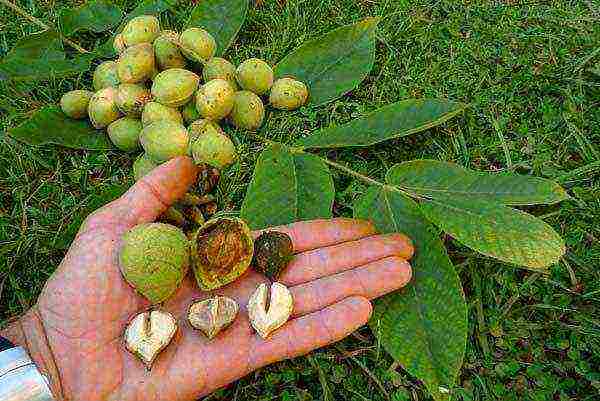
Planting and growing rules in the Urals
Since the Manchurian walnut is unpretentious, it is possible to plant and grow it in almost any conditions. In addition, designers often use it in landscape design. This can be done by planting seedlings or seeds.
Each growing method requires you to pay attention to 2 important points.
- Choosing a place. The culture belongs to light-loving plants, so the habitat should be open and sunny.And since the root system of the Manchurian walnut grows deeply and widely, you should choose a site away from buildings and other horticultural crops.
- Soil composition. The soil should be fertile, well-drained.
As for the planting process, here each method involves its own nuances.
Planting seedlings:
- Seedlings should be purchased in advance in a specialized store.
- If the soil is rather poor, a mixture of soil, humus, turf and sand should be prepared in a ratio of 4: 2: 2: 1. At the bottom of the hole, lay out drainage in the form of fragments of bricks or gravel, crushed stone.
- Part of the soil mixture is placed in a pre-prepared hole, at least 80 cm in size. Potash fertilizer or 1 glass of wood ash is applied. The seedling is placed in a hole and immediately tied to a peg, and then sprinkled with planting mixture. After that, a bucket of water is poured into the hole and the remaining soil is poured. Further, the seedling is again spilled with 0.5-1 liters of water.
Planting with seeds is somewhat different from growing seedlings and suggests its own characteristics. Here it is worth clarifying that it is preferable to plant before winter, in other words, in September. In this case, no preliminary seed stratification is required, and seedlings will appear much earlier.
The following stages of planting by seeds are distinguished:
- For planting, you should choose nuts harvested no more than 3 years ago, since germination is significantly reduced from the third year.
- The soil for sowing must be fertile, well-drained. The site should first be dug up and 2-3 glasses of wood ash should be added. Then it is necessary to form a bed and shed it thoroughly.
- The seed holes are prepared at a distance of at least 8 cm from each other. The depth of the pits should be 6-8 cm.
- Nuts are placed in the hole on the edge and sprinkled with earth.
- Nut seedlings can be immediately moved to a permanent place, but first pinch the taproot. It is not forbidden to leave the seedlings in place for another year, and then transplant to the prepared site.

Care rules in the suburbs
Immediately after planting a seedling or a nut fruit, the soil will need to be mulched with sawdust, peat, healthy foliage. Of course, the garden bed should be thoroughly watered and then kept moist.
If the planting was carried out in the fall, before the cold weather, young seedlings will need to be wrapped in non-woven material and covered with a protective mesh from rodents.
Further care for a young plant implies the following points:
- Watering the plant weekly. After 2-3 years, the frequency of watering should be reduced to 2 times a month. Starting from the third year, the walnut is watered once every 30 days.
- Weeding, loosening and mulching the soil around the seedling regularly to maintain moisture.
- In the second half of summer, the culture must be fed with fertilizer. Superphosphate is the best option here. You will need to dilute 20 g of the substance in 10 liters of water and pour it over the soil around the plant.
- To avoid sunburn, the trunk of the plant should be regularly whitened with a solution of lime with the addition of clay.
Diseases and pests
The Manchurian walnut is resistant to disease. But here too, exceptions occur.
The following probable diseases of the nut can be distinguished:
- Fungal diseases. Drying and blackening of the leaves will be a sign here. As a treatment, you will need to spray the plant with Fundazol or another agent containing copper. The procedure is repeated after 2 weeks.
- Gall mite. Females lay eggs in the central part of the leaves, which is why they form characteristic tubercles. The plant should be treated with colloidal sulfur diluted in 10 liters of water at the time of bud break. From the beginning of summer, you can spray with Fufanon every 10 days. Branches heavily damaged by the mite must be removed and burned.
- Nutcracker. This insect infects the bark, leaves and inflorescences of the nut. The best method of control is considered to be pruning the damaged areas of the plant. But if adults appeared from the larvae, the plant should be treated with chlorophos (0.2%) or karbofos (90 g per 10 l of water).
In general, the unique antimicrobial properties of the culture allow the plant to independently defend itself from the attacks of harmful organisms.
The healing properties, taste, and the attractive beauty of the Manchurian nut make us pay more and more attention to an unusual culture. And the ease of planting, as well as the ease in further care, determine the popularity of the plant among experienced and novice gardeners.
